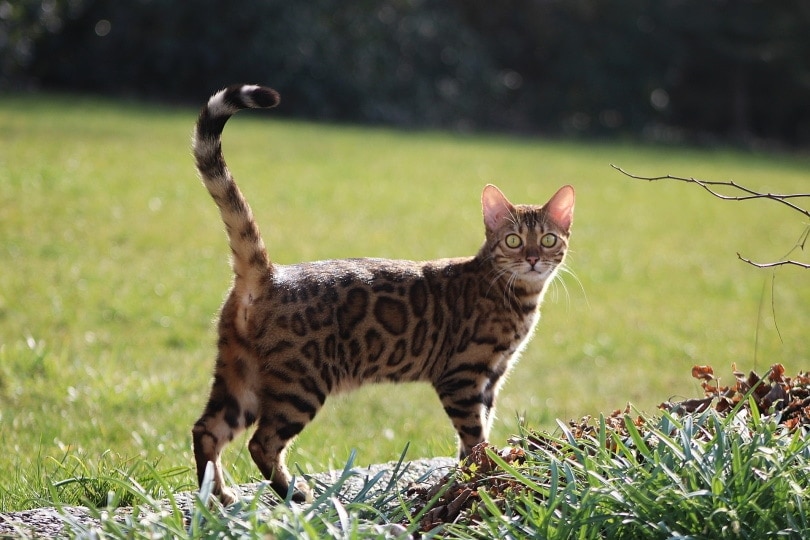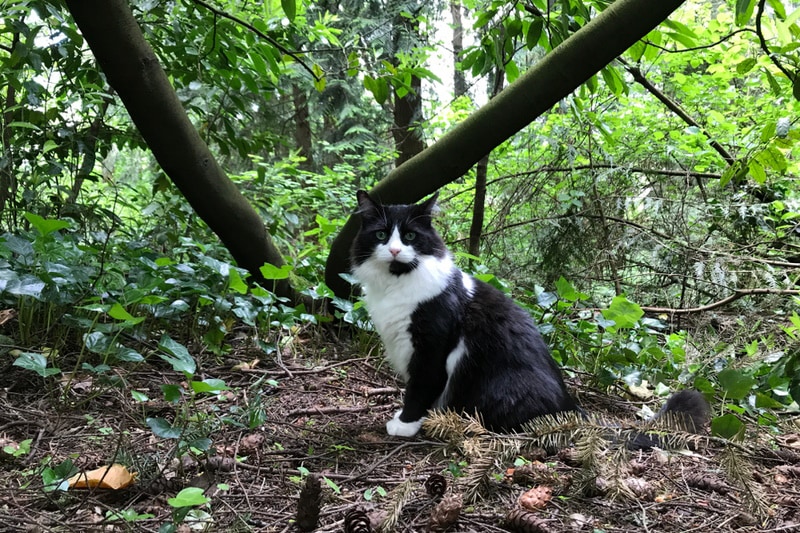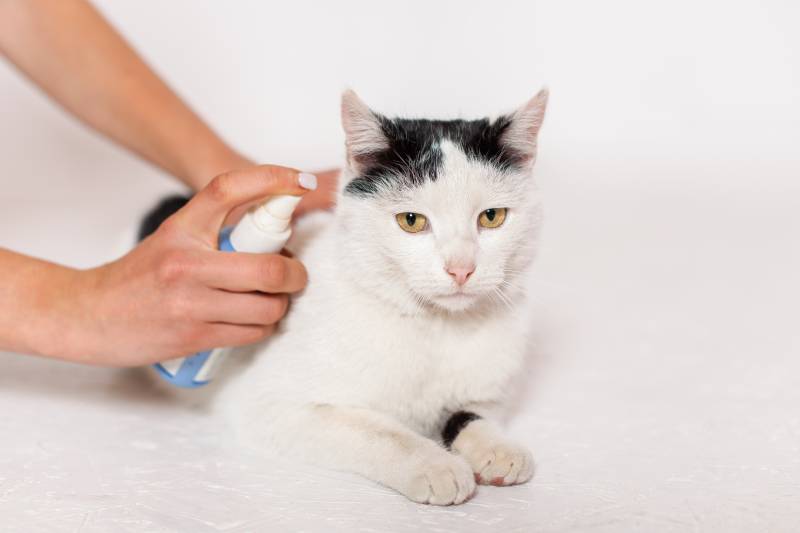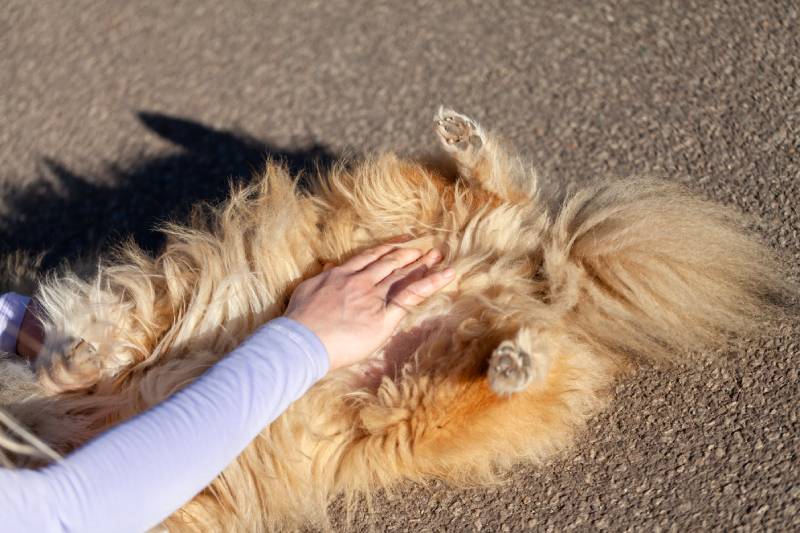5 Snowshoe Cat Colors and Patterns (With Pictures)
By Ashley Bates
Updated on
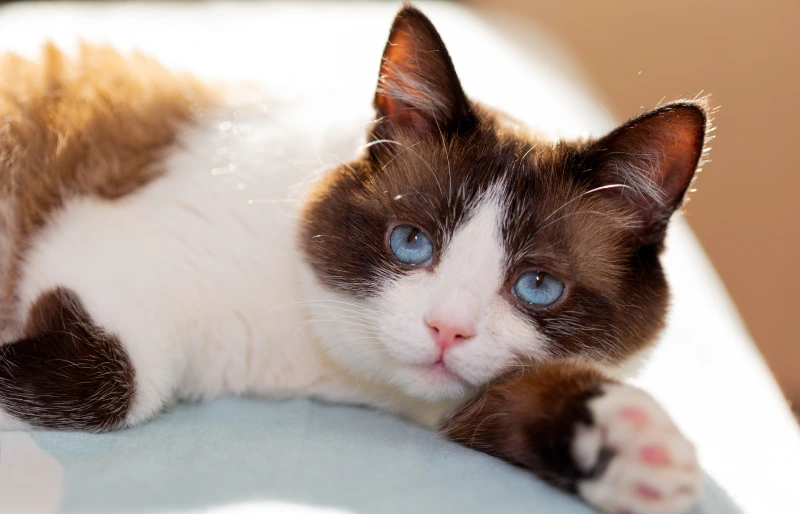
The lovely Snowshoe cat was a beautiful specimen that did not exist until the 1960s in the United States of America. These cats have very distinct looks and were originally called ‘Silver Laces.’ Despite the name, they have many color combos. These kitties came to existence by crossing the Siamese with a bicolored American Shorthair cat.
Not only did this give these cats an exceptional appearance, it really rounded their personality to make them a fabulous family companion. In this article, we’re going to discuss the individual colors and patterns of the Snowshoe cat and learn all about what it’s like to have one.
The 5 Snowshoe Cat Colors and Patterns
1. Seal
Seal gets its name from the animal you likely imagine when you hear the word. Realistically, seal is just essentially black with a sheen over top—usually golden, red, or brown.

2. Blue/Ebony
Blue point is quite common among Siamese cats and other cats with Siamese lineage. It is a combination of cool or frosty gray with darker points.
3. Chocolate
Some folks adore the dark, rich nature of the chocolate Snowshoe cat. These kitties have the classic white paws but very dark, elegant coats. The actual color could range anywhere from dark sable to deep chocolate.
4. Lilac/Silver
The lilac-to-silver coloration is very pale and lovely. They still have the classic darker markings on the face, ears, and legs, but remain light on the main coat with white feet.
https://www.instagram.com/p/CoiqWRDsKaI/?utm_source=ig_web_copy_link&igshid=MzRlODBiNWFlZA==
5. Cream/Cinnamon
The coat can range from cream to cinnamon, with a reddish-brown hue. They tend to have dark brown or black masks with classic white on the head, feet, and chest.
Facts About the Snowshoe Cat
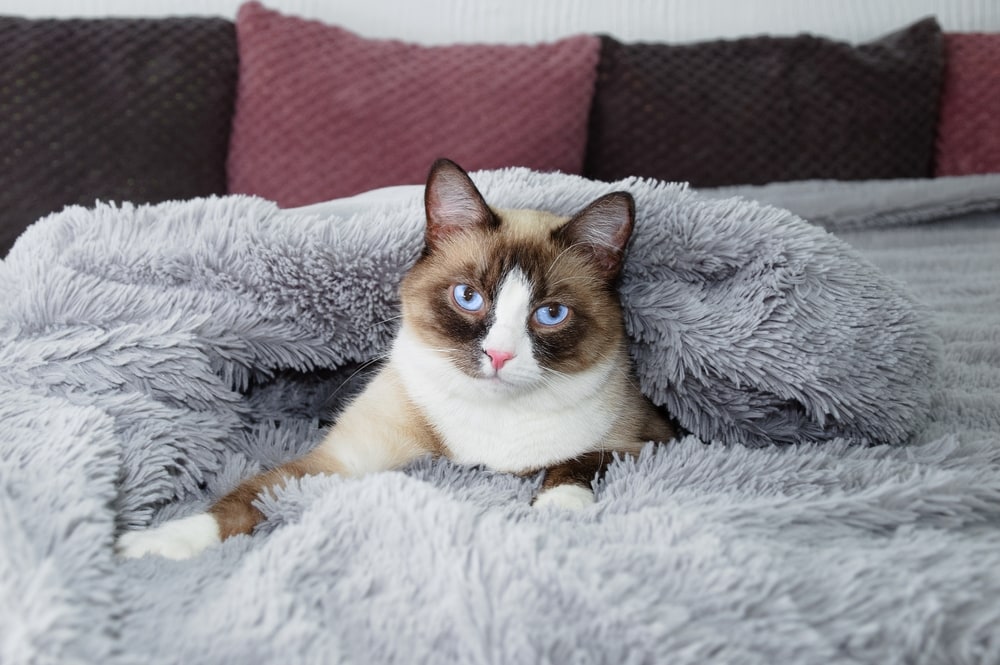
| Weight: | 10–12 pounds |
| Length: | 23–25 inches |
| Coat Length: | Short |
| Eye Color: | Blue |
| Lifespan: | 12–15 years |
| Origin: | United States |
Origin
The Snowshoe cat descends from their more common cousin, the Siamese. Breeder Dorothy Hines Daughtry designed these cats. She produced a litter of Siamese kittens in Philadelphia that bore very unique markings.
She took the three kittens with white points and feet and worked diligently to create a breed that could replicate this anomaly repeatedly. She chose the amiable American Shorthair to add for its color and personality.
She named them Snowshoe because of their distinct white feet. The torch was passed eventually to Vicki Olander, who obtained recognition from the Cat Fanciers’ Federation and American Cat Association.
While considered an experimental breed in 1974, they went on to gain recognition from many other cat associations. However, today, the Cat Fanciers’ Association will not accept this cat due to association requirements. They cannot pin down the breed enough to create a well-rounded standard for development.
However, many people still accept these wonderful felines into their homes as purebreds. They remain one of the rarest breeds in the United States.
Personality
Snowshoe cats are notorious for having a similar personality to their Siamese lineage with a more amiable twist. This means they are incredibly active within their family units, can be very affectionate, and often talkative.
These cats tend to be very independent but love to be part of the family. You won’t have to rouse them to action, as these cats are quite active and playful. These cats are brilliant, so they can be trained with ease.
It would not be unusual to see a person training a Snowshoe to walk on a leash, ride in a backpack, or do tricks for treats. They are often food-motivated, making it easy to keep their attention.
However, they are also docile in nature. They make magnificent cats for children, older adults, and homes with multiple pets. These cats often take a happy-go-lucky approach to life and acclimate very well to many lifestyles.
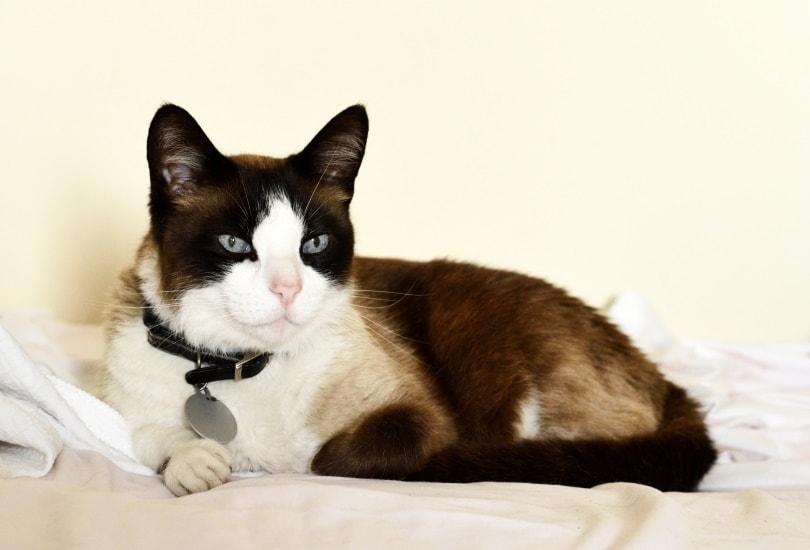
Exercise Needs
The Snowshoe cat needs a moderate amount of exercise to stay happy and healthy. On average, they require two 15-minute exercise sessions, which should be relatively easy to accomplish. Cats are usually very good at knowing when to burn off some steam.
However, you can encourage healthy exercise by taking your cat on walks, providing lots of quality entertainment, and spending time playing with them.
You can get creative and complete a few DIY projects. It can be a cheap way to provide fun items for your cat to enjoy. Sites like Pinterest and YouTube are crawling with tutorials.
Health Conditions
The Snowshoe cat is generally healthy, but it can come with certain genetic health concerns. Some of these include spinal issues, dental disease, respiratory illness, and sensitive stomachs.
The best way to keep your cat healthy is to take them to routine vet appointments. Your vet will run basic tests and examine them for any notable red flags. You can stay ahead of the curve, ensuring your cat stays their healthiest.
Buying a Snowshoe Kitten
Ultimately, the price of a Snowshoe kitten depends on the breeder, location, and quality of kittens.
When you select a breeder, it is imperative to know that you are getting exactly what they claim. Some sketchy breeders can try to produce authentic-looking Snowshoe kittens but need the validity behind the claims.
Snowshoe cats are rare, and prices often reflect that. Be prepared to put a deposit down, stay on waiting lists, or do some travel for a kitten.
At times, rescues and shelters may have Snowshoe cats (or mixed breeds that look like Snowshoes) for rehoming.
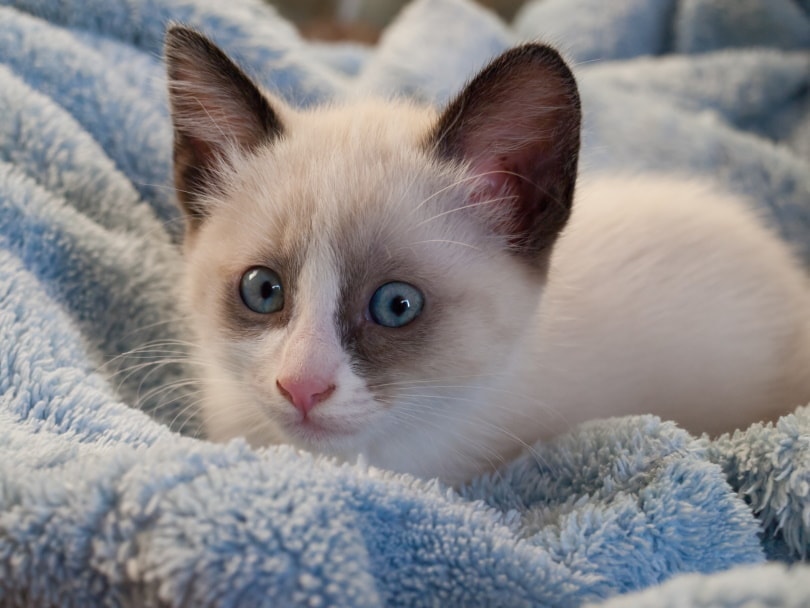
Conclusion
Snowshoe cats are certainly beautiful no matter what color pattern you choose. Ultimately, if you chose to bring home a Snowshoe cat, the appearance that you select will be your own personal preference. Since this breed is extremely rare, you might have to travel or get on long waiting lists just to have one in your care.
Because of their unique personalities and lovely coats, you might have your heart set on one of these beautiful cats. If you need help locating one, you can always check with local rescues and shelters to see if any adults are available for rehoming.
Featured Image Credit: Kokhanchikov, Shutterstock


